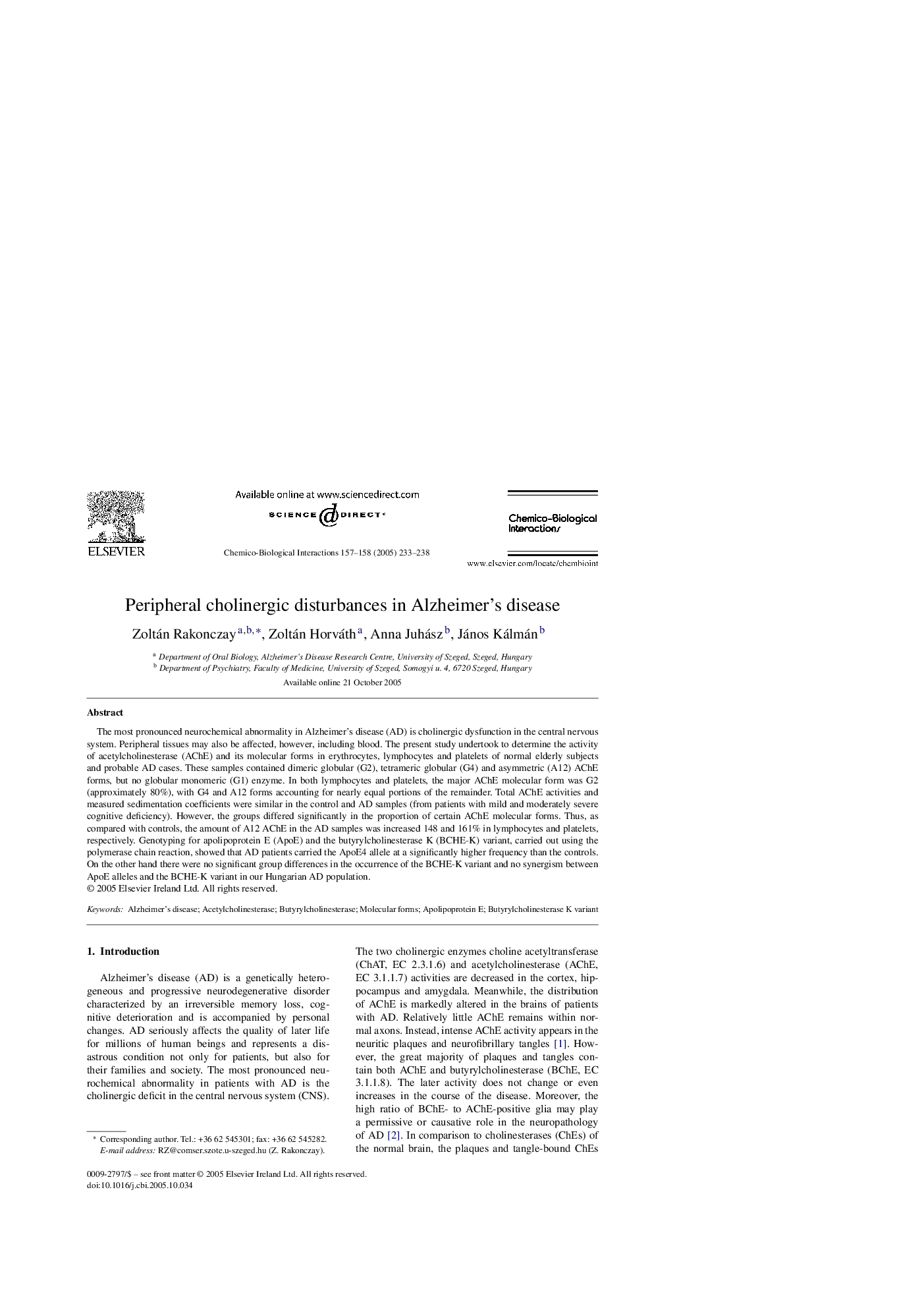| Article ID | Journal | Published Year | Pages | File Type |
|---|---|---|---|---|
| 9028158 | Chemico-Biological Interactions | 2005 | 6 Pages |
Abstract
The most pronounced neurochemical abnormality in Alzheimer's disease (AD) is cholinergic dysfunction in the central nervous system. Peripheral tissues may also be affected, however, including blood. The present study undertook to determine the activity of acetylcholinesterase (AChE) and its molecular forms in erythrocytes, lymphocytes and platelets of normal elderly subjects and probable AD cases. These samples contained dimeric globular (G2), tetrameric globular (G4) and asymmetric (A12) AChE forms, but no globular monomeric (G1) enzyme. In both lymphocytes and platelets, the major AChE molecular form was G2 (approximately 80%), with G4 and A12 forms accounting for nearly equal portions of the remainder. Total AChE activities and measured sedimentation coefficients were similar in the control and AD samples (from patients with mild and moderately severe cognitive deficiency). However, the groups differed significantly in the proportion of certain AChE molecular forms. Thus, as compared with controls, the amount of A12 AChE in the AD samples was increased 148 and 161% in lymphocytes and platelets, respectively. Genotyping for apolipoprotein E (ApoE) and the butyrylcholinesterase K (BCHE-K) variant, carried out using the polymerase chain reaction, showed that AD patients carried the ApoE4 allele at a significantly higher frequency than the controls. On the other hand there were no significant group differences in the occurrence of the BCHE-K variant and no synergism between ApoE alleles and the BCHE-K variant in our Hungarian AD population.
Keywords
Related Topics
Life Sciences
Environmental Science
Health, Toxicology and Mutagenesis
Authors
Zoltán Rakonczay, Zoltán Horváth, Anna Juhász, János Kálmán,
